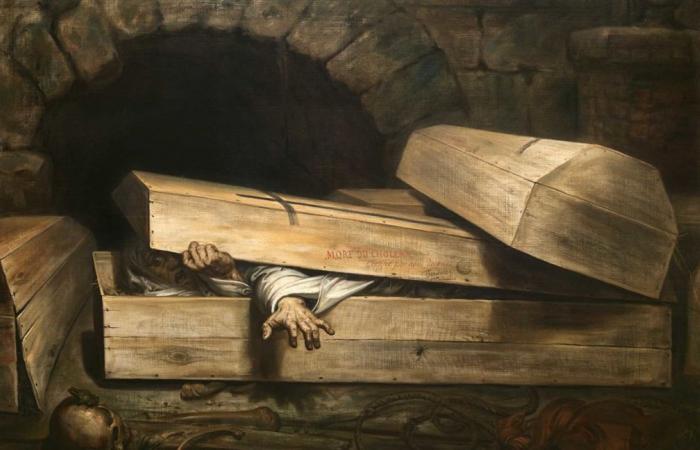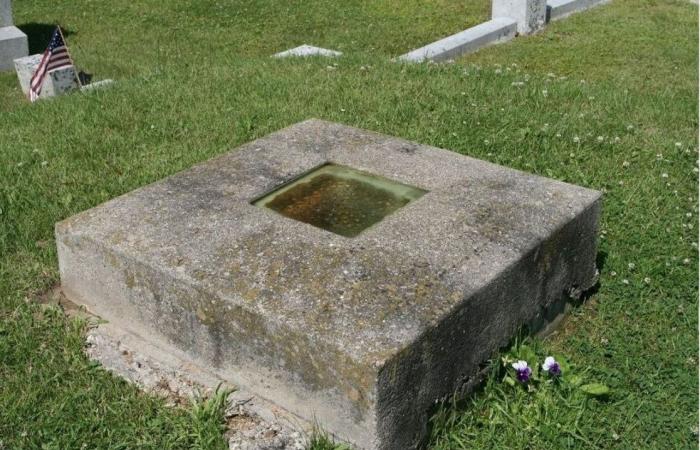Inspired by the biblical figure of Lazarus, resurrected by Jesus four days after his death, the Lazarus phenomenon refers to the rare and fascinating cases during which a person declared clinically dead spontaneously comes back to life, sometimes several minutes after the apparent stopping of their heart . Observed sporadically over the centuries, this phenomenon remains largely misunderstood by modern medicine and raises numerous questions. For example, how does this return to life manifest itself and what influence has this phenomenon had on funeral practices? And above all, like the story of this American who woke up during the organ harvesting carried out on his body presumed to be brain dead in 2021, do we often encounter cases of this kind despite advances in medicine?
Lazarus phenomenon: what are we talking about?
The Lazarus phenomenon describes the spontaneous return of vital signs after cardiac arrest. If resuscitation attempts do not result in immediate recovery, it sometimes happens that the heart suddenly resumes normal activity without an obvious cause. Currently, modern medicine does not fully understand the biological mechanism behind this phenomenon. extremely rare and therefore still unexplained for the moment. Some researchers hypothesize a chest compression effect or a sudden release of respiratory pressure that could temporarily restart the heart.
These incidents are in any case extremely surprising for medical personnel confronted with this return of consciousness. This therefore gave rise to ethical questions regarding the definition of clinical death.
A return to life… most often temporary
It should be noted, however, that most people who come back to life after a Lazarus phenomenon usually do not survive long. This spontaneous return of vital signs, often temporary, can in fact result in death. a few hours or days later due to the prolonged cessation of oxygenation of the body. The longer a cardiac arrest lasts, the lower the chance of recovery and the higher the risk of brain or heart damage.
However, in some extremely rare cases, individuals regain some vital stability and can survive longer with a highly variable quality of life if they receive intensive care. The documented cases of survival and almost normal life regained most often depended on circumstantial factors like extreme hypothermia causes a slowdown in metabolism, which can reduce damage from cardiac arrest and increase the chance of recovery. However, each case remains unique in terms of post-resuscitation evolution.
The incidence in society of the Lazarus phenomenon
The phenomenon of Lazarus has had a direct impact on funeral practices over the past centuries, particularly in the 19th century, an era marked by numerous wars, epidemics, fatal injuries due to lack of good treatment and therefore victims. Before the advent of modern medical technologies, the fear of premature burial was indeed omnipresentfueled by stories of individuals found alive in their coffins after being declared dead.
This anxiety, stronger than even the fear of dyingpushed for the creation of systems to prevent live burials such as the installation of bells attached to the limbs of the deceaseda widespread practice in Europe. In the event of renewed consciousness, a buried person could pull on a rope connected to the bell to alert people near the cemetery and thus avoid death by asphyxiation in their coffin.
Ever more sophisticated coffins
Speaking of coffins, they are getting better. If in the 18th and 19th centuries, some dying people asked that we remove their hearts after their presumed death to combat taphophobia (the fear of being buried alive, often mentioned throughout history, both among Greek philosophers and among famous figures like Frédéric Chopin or the former American president George Washington), the inventors of the time for their part deployed all their ingenuity to appease their contemporaries.
Patent application filings are increasing and certain devices are being equipped with a ventilation system to allow a person buried prematurely to breathe while waiting to be rescued or to call for help while in 1822, Adolf Gutsmuth, a German doctor, imagined one equipped with a tube to feed the dead. In 1868, secure coffins promised this time in particular to open using a lever and to deploy a ladder to escape. Finally, how can we not think of the now famous tomb of Dr. Timothy Clark Smith, afraid of ending up six feet underground while he is still alive and who had it fitted with glass so that we could carefully monitor its proper death and decomposition.
These inventions, although motivated by anecdotal cases, have helped establish additional monitoring protocols and reveal the profound influence of the Lazarus phenomenon on perceptions of death and the deep fear of many humans of ending up buried alive. These cases also allowed a real awareness of the limits of medical knowledge on death throughout history. However, can similar cases still occur today, in a time of advances in medicine and tools for monitoring patients' vital signs?
Risks proven today?
With medical progress, the risks of an incorrect declaration of death are obviously much less common. Technological advances and progress in monitoring tools (such as the electroencephalogram and cardiac monitoring) now make it possible to confirm a death with certainty. However, some cases of Lazarus phenomenon continue to be reported, even in a hospital settingand may arise in special circumstances.
Medications and signs that go unnoticed
Certain medications administered during resuscitation attempts could, for example, play a role in the Lazarus phenomenon. For example, adrenaline used to stimulate the heart during resuscitation can sometimes remain in the system long enough to induce a delayed cardiovascular response. As for atropine, it is a medication that blocks certain receptors and increases the heart rate. Sometimes used in cases of cardiac arrest, it could, in rare cases, contribute to a spontaneous resumption of cardiac activity. These medications could thus cause a return of cardiac activity that appears spontaneousbut which is in reality a delayed effect of interventions.

Incorrect diagnoses of death can also occur in the face of very weak and intermittent residual vital signsto the point of not always being perceptible at the first examination, and therefore to which attention should be paid (very weak pulse, minimal and sporadic respiratory activity or even neuromuscular microreflexes [tics et contractions]).
Doctors must therefore take into account the possibility of a recovery of vital signs, however small it may be. If modern medicine today makes it possible to ensure increased precision in the declaration of death, the mysteries surrounding the Lazarus phenomenon in any case always encourage caution during protocols for declaring clinical death.








